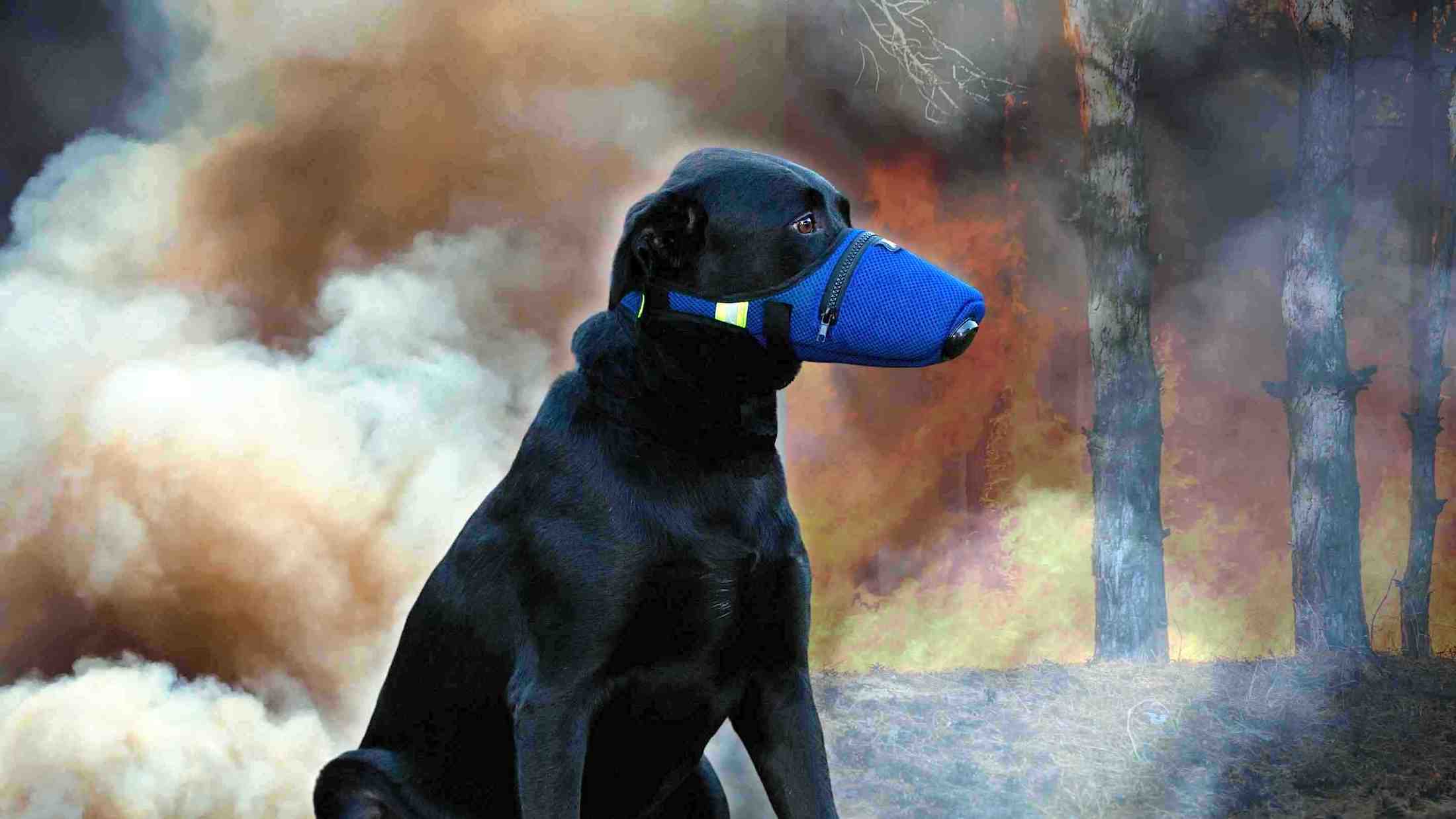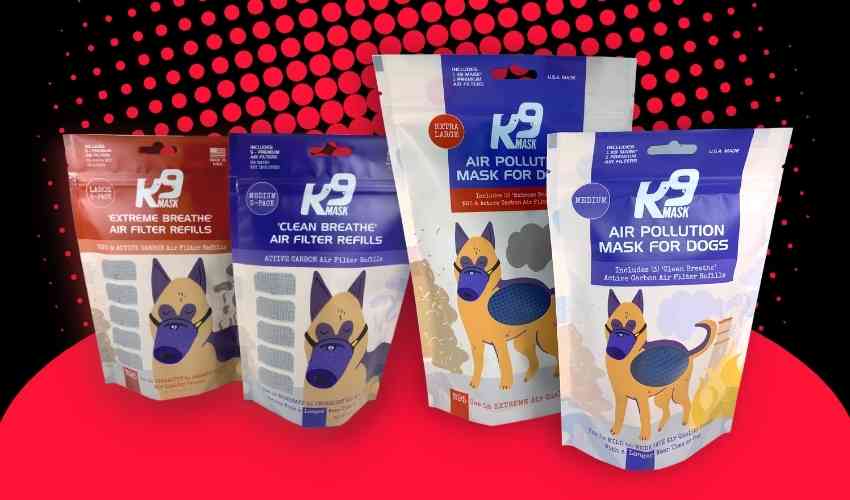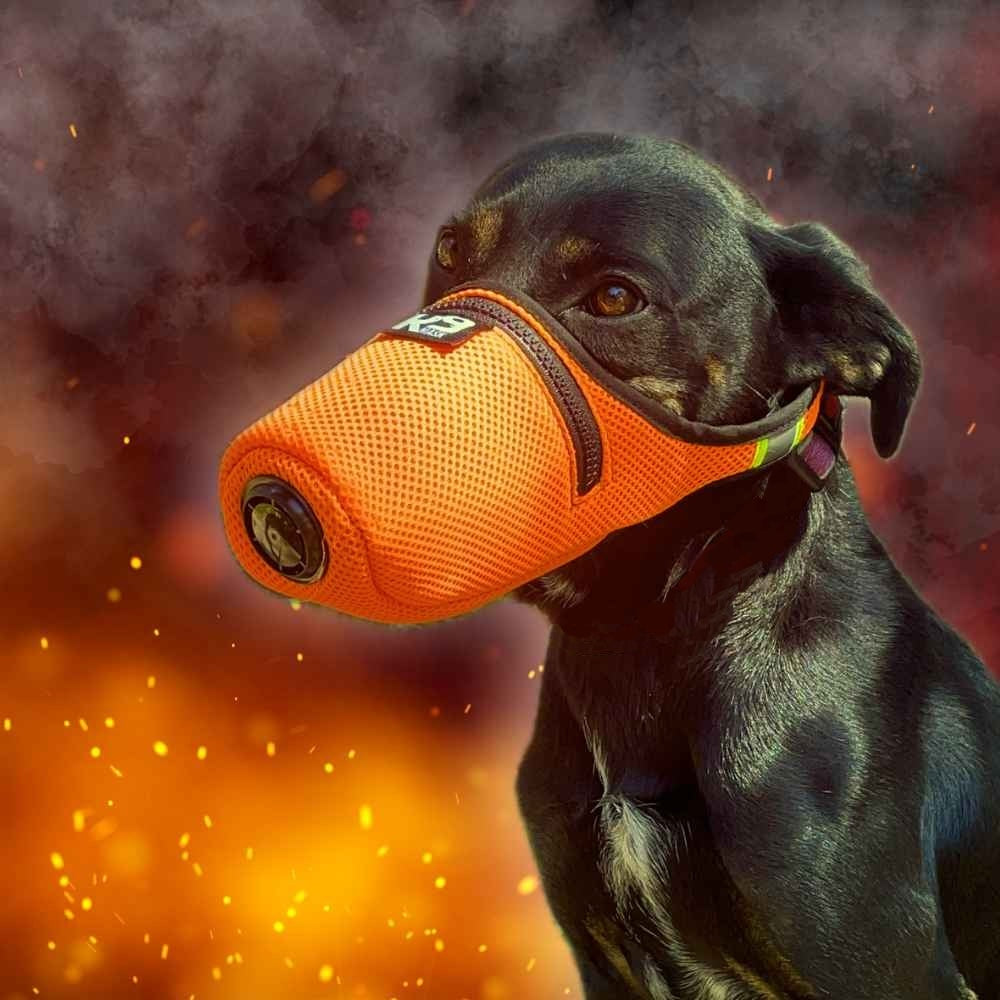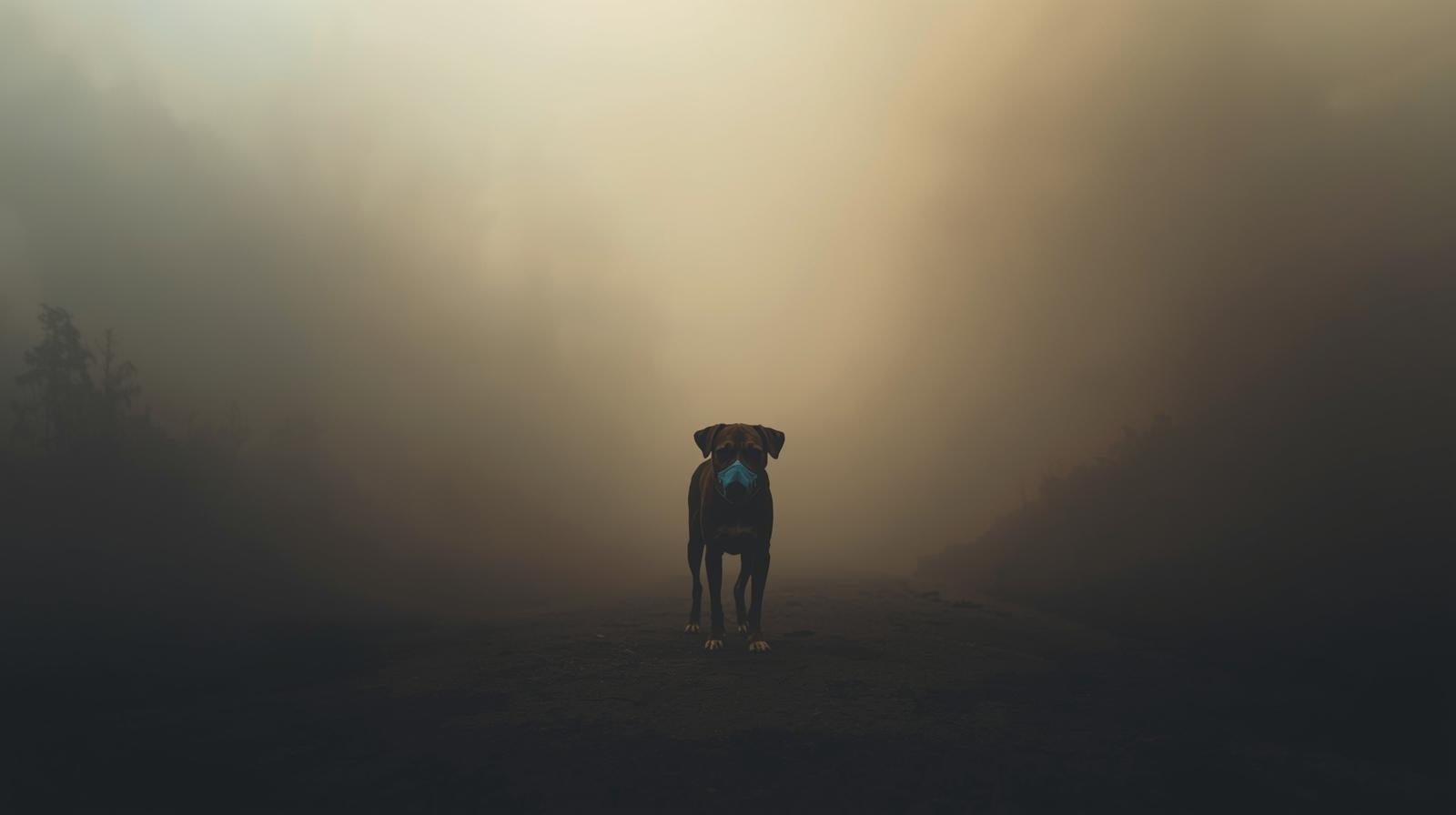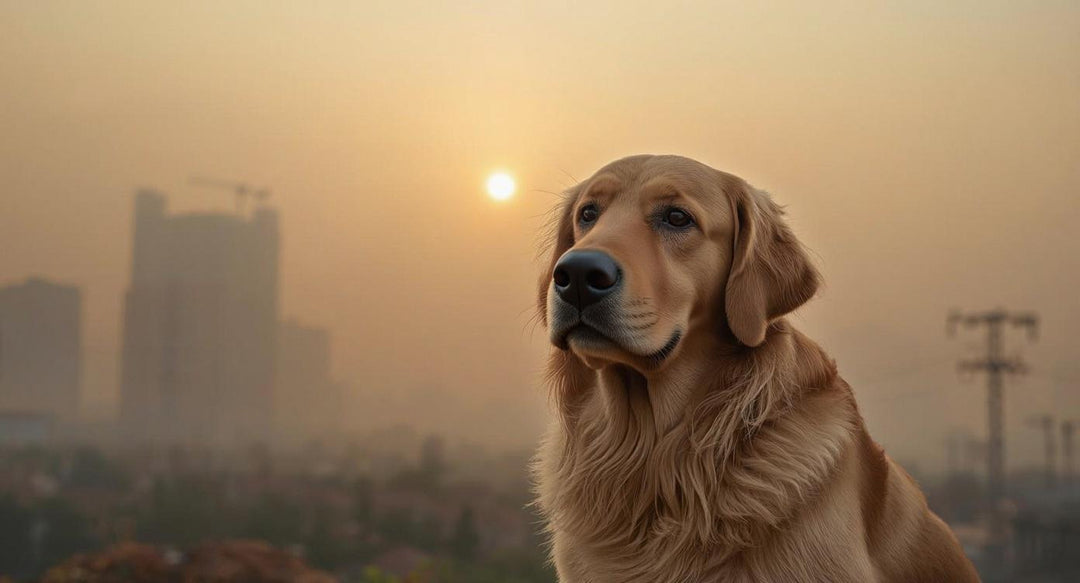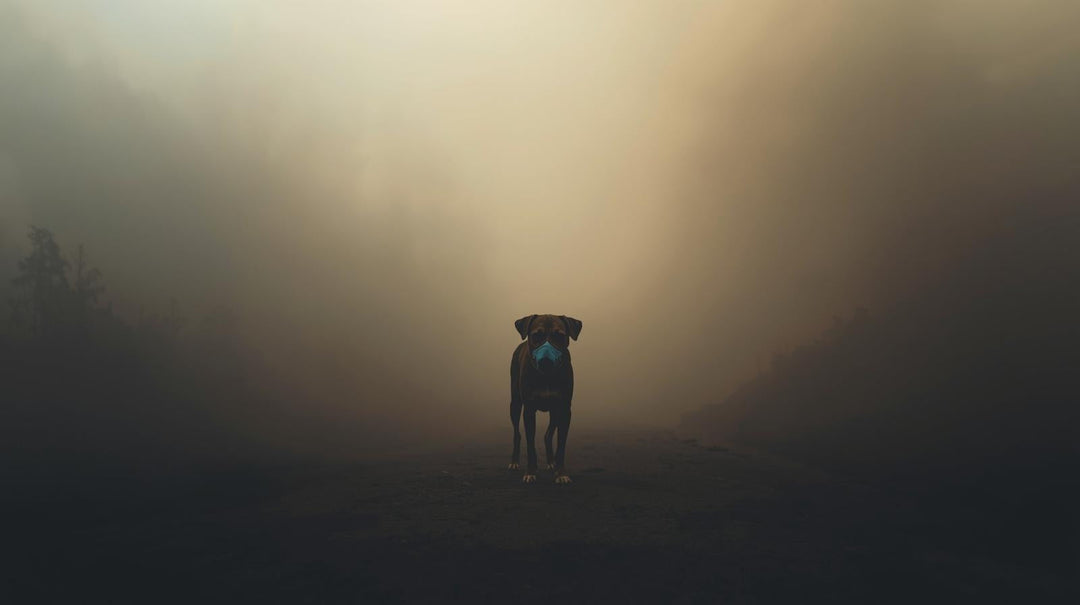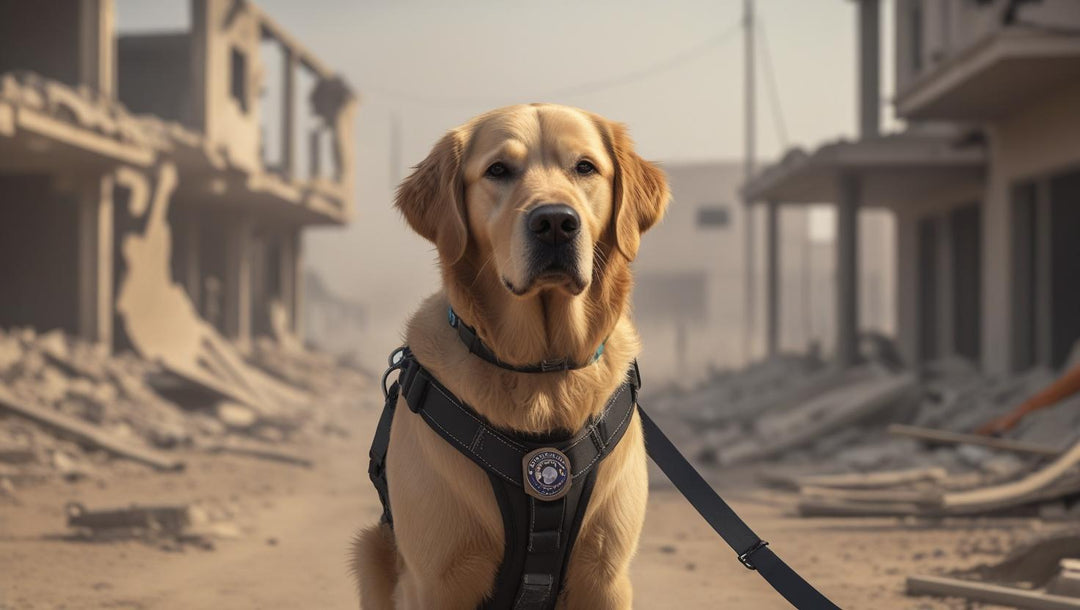Wildfires are becoming increasingly common, and while we often think about the immediate threat of smoke in the air, there’s a hidden danger many pet owners overlook: the toxic residue left behind on the ground. For dogs, who explore the world with their nose close to the earth and paws touching every surface, this lingering hazard can pose both short-term and long-term health risks.

How Wildfire Smoke Particulates Settle on the Ground
When wildfire smoke spreads, it carries with it fine particulate matter—tiny particles of burned wood, plastics, chemicals, and other debris. These particulates eventually settle onto sidewalks, grass, soil, and even indoor surfaces. While humans may avoid direct contact, dogs walk, sniff, and sometimes lick these contaminated areas, making them especially vulnerable to ingestion and inhalation.
Risks from Walking and Sniffing Contaminated Surfaces
Dogs’ natural behaviors put them in direct contact with wildfire smoke residue:
- Paw absorption: Toxic particles can stick to paw pads and fur. Dogs may absorb harmful chemicals through their skin or ingest them when licking their paws.
- Nose exposure: With their noses close to the ground, dogs can inhale higher concentrations of fine particulates stirred up by wind, walking, or play.
- Oral ingestion: Dogs are prone to licking surfaces, toys, or even grass, increasing the chance of ingesting toxic debris.

Short-Term Health Impacts
Wildfire smoke particulates can trigger immediate symptoms in dogs, including:
- Coughing, sneezing, and nasal irritation
- Eye redness or discharge
- Lethargy or reduced appetite
- Vomiting or gastrointestinal distress from ingestion
These may resemble mild allergies but can escalate quickly with continued exposure.
Long-Term Health Risks
Repeated or prolonged exposure to wildfire smoke residue can lead to more serious conditions, such as:
- Respiratory disease: Chronic bronchitis, asthma-like symptoms, or reduced lung capacity.
- Cardiovascular issues: Fine particulates can enter the bloodstream, stressing the heart and circulatory system.
- Cancer risks: Many wildfire residues contain carcinogenic compounds that may increase cancer risks over time.
- Organ damage: Persistent toxin ingestion can affect liver and kidney function.
Protecting Your Dog from Hidden Dangers
Fortunately, there are steps you can take to minimize risks:
1. Clean paws regularly: Wipe your dog’s paws with pet-safe wipes or rinse them with water after outdoor walks.
2. Use protective gear: Consider dog booties or a K9 Mask® when air quality is poor.
3. Limit outdoor activity: Keep walks shorter and avoid heavily affected areas when wildfire smoke is present.
4. Maintain indoor safety: Vacuum floors, clean pet bedding, and use HEPA air purifiers to reduce indoor particulates.
5. Monitor symptoms: Watch for coughing, fatigue, or digestive upset, and seek veterinary care if they persist.
The K9 Mask®: Extra Protection for Your Pet
While cleaning and limiting exposure helps, sometimes dogs need extra protection—especially during active wildfire events or in regions where smoke lingers. The K9 Mask® is designed to filter out harmful airborne toxins, including wildfire smoke particles, to help your dog breathe cleaner air even in hazardous environments.
Bottom line: Wildfire dangers don’t disappear when the smoke clears. Toxic particles remain on the ground, where your dog is most exposed. By understanding the risks and taking proactive steps, you can protect your pet from both immediate discomfort and long-term health complications.




